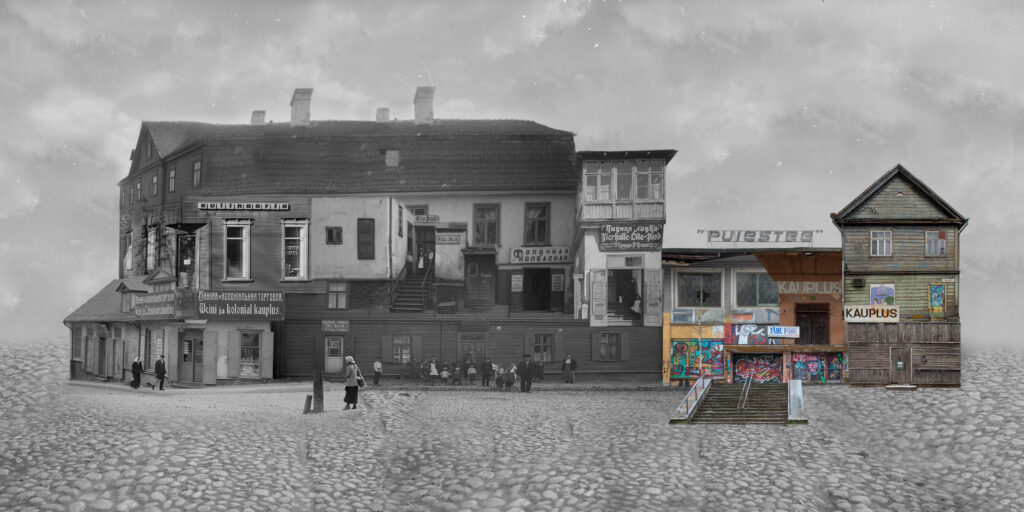Kokkuvõte
Projekti „Tartu väikekauplused mälus“ eesmärk on edasi kanda Tartu väikekaupluste kultuuri. Töö eesmärgi saavutamiseks uuriti mälu ja koguti ja analüüsiti materjale Tartu väikekauplustest nii vahetust sotsiaalmeediast kui ka arhiividest.
Töö kirjalik osa käsitleb ja võrdleb erinevaid mälu ja arhiivinduse aspekte, väikekaupluste olemust ja ajalugu ning inimeste mälestusi populaarseimatest väikepoodidest. Mälu kirjeldavas peatükis tuuakse välja inimmälu kallutatus negatiivset kiiremini unustada, mis mõjutab ka mälestusi väikekauplustest. Projekti tulemusena selgus, et töö kirjutamise hetkel olid kõige populaarsemad väikepoed Toome pood, Herne pood, Tartu pood, Kuu pood ja Ümera pood.
Toome pood on endiselt aktiivne pood, mida on küll suletud aga ajaloo jooksul ka uuesti avatud. Peamiselt on inimestel meelest Toome poest ostetud jäätis ja kommid. Aruteldakse, et ilmselt võrreldes teiste poodidega on Toome kauplus pääsenud sulgemisest tänu oma heale asukohale.
Herne pood on samuti aktiivne pood, millest on saanud üks Supilinna sümboleid. Herne poest meenutatakse jäätise ja alkoholi ostmist, kuid öeldakse, et vajadusel saab sealt kõike.
Tartu pood on nüüdseks suletud kauplus, mis ruutmeetrite arvu järgi tegelikult polnudki väikekauplus. Siiski mäletavad inimesed seda kui väikepoodi. Peamised mälestused Tartu poest on kondiitritooted. Kuna Tartu pood oli suurem, tundus ta mõnele meenutajale ka kõledam.
Kuu pood on legendaarne karlovlaste seas. Kauplust peetakse kokkusaamise kohaks. Mäletatakse ka palju teisi Kuu poe läheduses olnud väikepoode, näiteks poepidajate lahku minemu järgset Siilu poodi, mis siiski ei suutnud Kuu poe kõrval kaua püsida.
Ümera pood on väikepoe staatusest nüüdseks arenenud Selveri ketipoeks. Vana versiooni mäletavad veel paljud ja peamiselt meenutatakse Ümera poe kõrval olnud kaljavaati ja taarapunkti. Ümera pood jäi arhiivimaterjalidest silma suure koguse trahvidega.
Peamiselt mäletasid inimesed lapsepõlve ja noorusaja seiku. Arhiivimaterjalides leidub pikemaid ja täpsemaid kirjeldusi kui mälestuste kirjelduses.
Autor käsitleb ka Tartu väikekauplusi kultuuris, näiteks kirjanduses. Kuu poest on kirjutatud räpplugu ja kõige populaarsematest poodidest on kirjutatud paljudes elulooraamatutes.
Projekti teiseks osaks on fotokollaaž Tartu väikekauplusteste fotodest. Töö kujutab endast suureks ehitiseks kokku töödeldud hoonet, mis koosneb vanadest arhiivifotodest ja autori enda fotodest Tartu väikekauplustest. Väikesed kauplused moodustavad kollaažil sarnase kaubandus-colosseumi, kui seda on nende hukuks saanud kaubanduskeskused. Vanade poodide kokkusulandumine ja seepiatoonid visualiseerivad mälestuste sürreaalsust ja moonutusi.
Summary
The aim of the project “Tartu convenience stores” is to convey the culture of Tartu’s small stores. To reach the goal of the project the author analyzed memory, collected and analyzed materials about the convenience stores from archives and from social media.
The written part of the project addresses and compares different aspects of archival science and memory, the nature and history of convenience stores as well as individual memories about them. In the chapter about memory, the author brings out the fading affect bias, which makes people forget negative memories faster, which also affects the narratives about small convenience stores. As a result of the project the author has figured that the most popular convenience stores of Tarty are Toome store, Herne store, Tartu store, Kuu store and Ümera store.
Toome store is still active, it has been closed and opened again several times. Mainly the memories mention buying ice cream and candy. The public thinks that the Toome store is still active compared to many closed convenience stores due to its good location.
Herne store is also still an active convenience store, which has become one of the symbols of Supilinn. The keywords mentioned about Herne store are ice cream and alcohol, but supposedly it’s possible to find all basic necessities from the shop.
Tartu store is closed and technically does not classify as a convenience store due to its size. However, people still mention it as one. Most mentioned aspect of the Tartu store is the bakery goods. As the Tartu store was bigger than other convenience stores, it did not have the same pleasant atmosphere.
Kuu store is a legendary place among people living in Karlova. The store is considered a meet up place. Many remember other small stores near Kuu store, such as Siilu store which was established after the Kuu store owners broke up. The Siilu store however did not last very long.
Ümera store is no longer a small convenience store but part of a chain. The old small shop is still remembered by many and most mention the local drink called “Kali” alongside the bottle return spot.
Mostly the individuals sharing memories told stories from their childhood and youth. The archive materials had longer and more specific descriptions than the shared memories.
The author also takes a look at the mentions of Tartu’s convenience store in culture, for example literature. There’s a rap song about the Kuu store and many of the most popular convenience stores are mentioned in autobiographical books.
The practical side of the project is a photo collage of Tartu’s old convenience stores. The visual work represents the small stores combined into a big formation, which resembles a building. The creation consists of old archive photos and of photos shot by the author themself. The small stores create a large shopping colosseum which resembles malls, which were considered the downfall of small stores. The fusion of buildings and sepia colours of old stores visualize the surreality and distortions of memory.








